When I say “focus,” I’m alluding to the fact that fitness trackers are made to track activity well and anything else is extra. They often don’t have the bells and whistles that smartwatches do that would distract from their activity-tracking abilities. They also tend to have fewer sensors and internal components, which keeps them smaller and lighter. Fitness trackers are a better option for those who just want a less ostentatious device on their wrists all day long.
Battery life tends to be better on fitness trackers, too. Most fitness bands will last five days to one week on a single charge — and that’s with all-day and all-night use.
When it comes to price, there’s no competition. Most worthwhile smartwatches start at $175-$200, but you can get a solid fitness tracker starting at $70. Yes, more expensive bands exist (and we recommend a few here), but you’ll find more options under $150 in the fitness tracker space than in the smartwatch space.
When to enter Smartwatch Land
If you need a bit more from your wearable, you’ll want to opt for a smartwatch instead. There are things like on-watch apps, alerts and even more robust fitness features that smartwatches have and fitness trackers don’t. You can use one to control smart home appliances, set timers and reminders, check weather reports and more. Some smartwatches let you choose which apps you want to receive alerts from, and the options go beyond just call and text notifications.
But the extra fitness features are arguably the most important thing to think about when deciding between a fitness tracker and a smartwatch. The latter devices tend to be larger, giving them more space for things like GPS, barometers, onboard music storage and more. While you can find built-in GPS on select fitness trackers, it’s not common.
Engadget picks
Best overall: Fitbit Charge 4
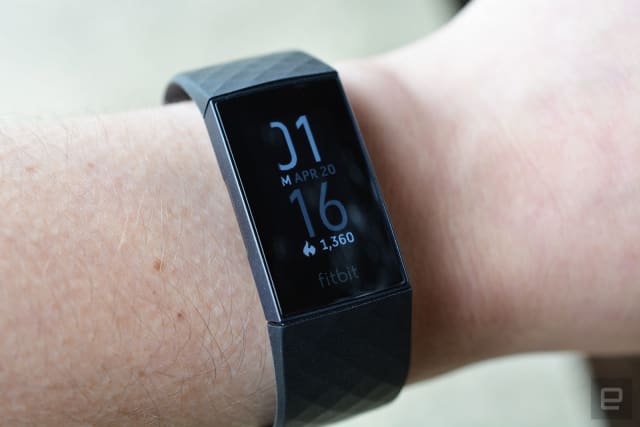
Valentina Palladino / Engadget
While on the expensive side for a fitness tracker, the $150 Fitbit Charge 4 has all the features you’d need from an activity band and more. Its major selling point is built-in GPS. it will track outdoor runs, bike rides and more on its own and automatically upload maps to the Fitbit app. It has a good heart rate monitor as well that works all day and all night to record pulse data. Fitbit’s new active zone minutes will also let you know when you’ve moved into a different heart rate zone while working out, which can be really motivating mid-run.
The Charge 4 also includes Spotify control and Fitbit Pay as standard features, so you can pause and play tracks while you’re working out and pay for a coffee on your way home without having your wallet. Lots of competing trackers don’t have features like that (especially NFC payments), so we think they, along with its litany of other fitness features, justify the Charge 4’s higher price tag. We also appreciate that the Charge 4 gets roughly five days of all-day and all-night use on a single charge, and you’ll be able to get a couple days of battery life even when using the GPS regularly.
Alternative: Garmin Vivosmart 4
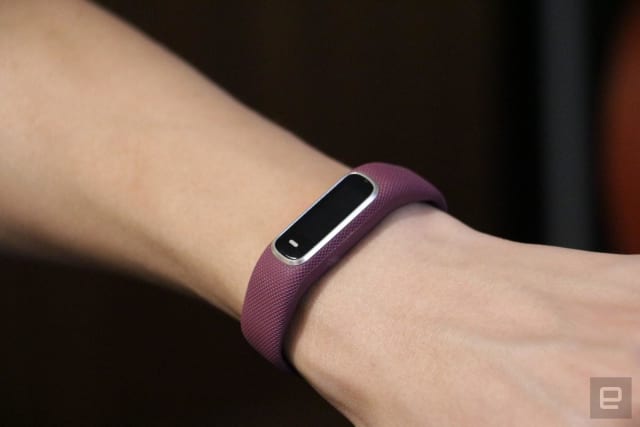
Engadget
A more subtle-looking alternative is the $130 Garmin Vivosmart 4. It’s thinner than the Charge 4 and fits in a bit better with bracelets and other jewelry you might wear regularly. But its attractive design is only part of its appeal — Garmin knows how to track fitness, and the Vivosmart 4 is proof that you don’t need to drop hundreds on one of the company’s fitness watches to get a solid device.
Like the Charge 4, the Vivosmart 4 tracks all-day activity and sleep and has a pulse ox sensor for blood oxygen saturation measurements. It has only connected GPS capabilities, and it has universal music controls that can control the playback of most anything. The band is also waterproof and can track basic swim workouts, plus it also has a battery life of up to seven days. While it’s similar to the Charge 4 in that the Vivosmart 4 works with both Android and iOS devices, it’s a bit more flexible as it syncs with Apple Health (the Charge 4 and other Fitbit devices do not).
Buy Vivosmart 4 at Best Buy – $130
Best budget: Fitbit Inspire HR
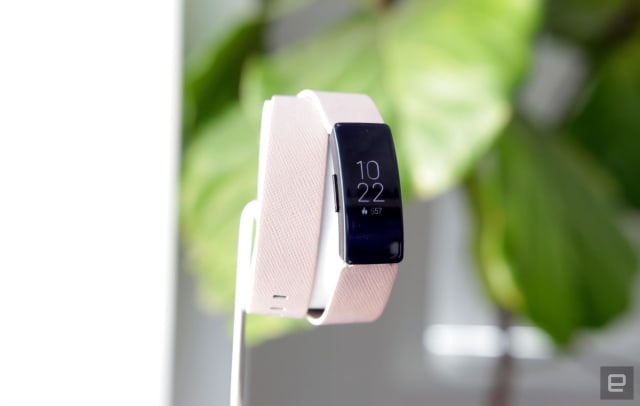
Engadget
If you only have $100 to spare, the Fitbit Inspire HR is the best option. It strips out all the luxury features from the Charge 4 and keeps only the essentials. You won’t get built-in GPS, Fitbit Pay or Spotify control but you do get excellent activity tracking, automatic workout detection, smartphone alerts and plenty more. The “HR” designation means it includes an optical heart rate monitor — you could save an extra $30 and opt for the Fitbit Inspire, which doesn’t track pulse, but we recommend the Inspire HR if you can afford it.
The Inspire HR is thinner than the Charge 4 but it also has interchangeable bands, so you can switch up its style whenever you feel like it. It has connected GPS instead of a built-in sensor, so you can map workouts — you just have to bring your smartphone along for the ride. Its design is also swimproof, and it should last up to five days on a single charge. All of these features make it the best value fitness tracker you can get.
Buy Inspire HR at Amazon – $100
Alternative: Samsung Galaxy Fit
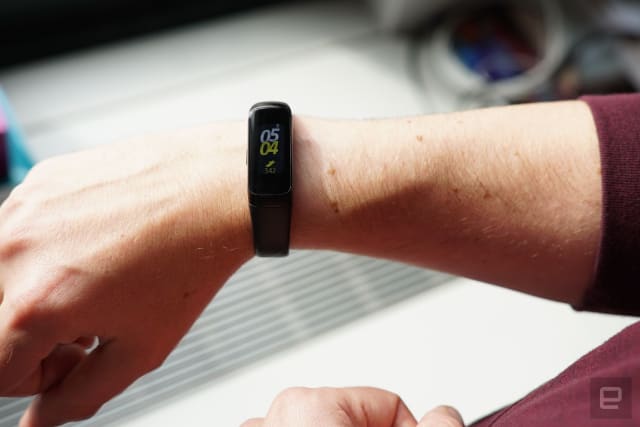
Cherlynn Low / Engadget
The $100 Samsung Galaxy Fit band is almost like a more affordable Garmin Vivosmart 4. The two trackers share the same skeletal design but the Galaxy Fit looks a bit more utilitarian — you can swap out its bands, though — something you can’t do on Garmin’s device. Engadget’s Cherlynn Low was impressed with the tiny tracker: the Tizen-based interface is colorful and easy to use, and plenty of people will appreciate its durable, no-nonsense design. It tracks a bunch of workouts as well and even has auto-exercise recognition. That’s on top of its daily activity tracking and sleep monitor, all of which uses the built-in heart rate monitor to collect pulse data throughout the day. Samsung estimates a seven-day battery life on the Galaxy Fit, which means constant charging will not be a concern. Samsung isn’t as comprehensive as Garmin is when it comes to fitness data collection and analysis, but the Galaxy Fit is a good option for those who want an easy-to-use tracker that sticks to the basics.
Buy Galaxy Fit at Best Buy – $100
Most fashionable: Withings Move
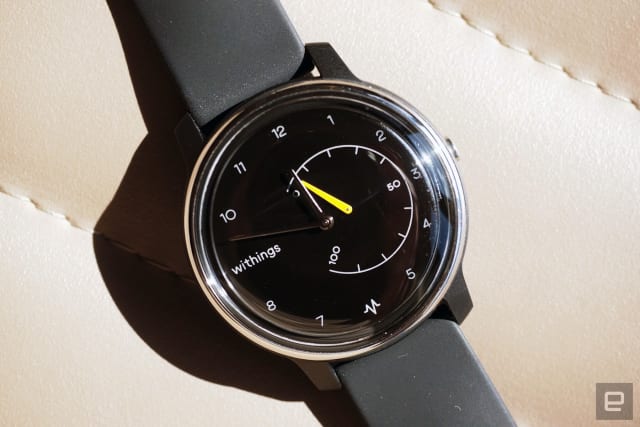
Engadget
All of the previously mentioned fitness trackers are attractive in their own way (bonus points to those that have interchangeable bands), but they share a similar look. There aren’t many alternative designs for these devices anymore. The $70 Withings Move watch is an exception, and one of the most traditionally fashionable fitness trackers you can get. It’s an analog watch with a couple of health monitoring features including step, calorie, distance and sleep tracking, connected GPS, auto-recognition for more than 30 workouts and a water-resistant design. But we really love it for its button-cell battery, which can last up to 18 months before needing a replacement.
Buy Withings Move at Amazon – $70






More Stories
How To Find A Custom Home Builder Without Losing Your Mind
5 Realistic Real Estate Considerations!
12 Critical Thoughts to Contemplate When Constructing a Dwelling Extension in Ireland